Google Pixel 8a Intro
The series has enjoyed tremendous success to this day, and this holds true for the newly launched Pixel 8a. The phone landed on May 7th, after a surprising early move by Google, and it’s poised to give all midrangers a serious run for their money.
This phone has a lot going on for it. From the 120Hz screen and the last generation Tensor G3 chipset to Google’s almighty Gemini AI available at a press of a button. Some might even say that Google shot itself in the leg with the Pixel 8a, making the regular Pixel 8 a tough sell. Well, it’s time to find out!
Table of Contents:
Also read:
Google Pixel 8a Specs
AI magic for the masses
Let’s start with an overview of the Google Pixel 8a specs:
| Specs | Google Pixel 8a |
|---|---|
| Size and Weight | 152.1 x 72.2 x 8.9mm |
| Display | 6.1-inch FHD+ OLED, 120Hz |
| Processor | Tensor G3 |
| Software | Android 14 |
| Cameras | 64MP OIS main 13MP ultrawide 13MP front |
| Battery Size | 4,492 mAh |
| Charging Speeds | 18W wired charging 7.5W wireless |
| Prices | 8/128GB for $499 |
Google Pixel 8a Design and Display
Not bezel-less, no sir
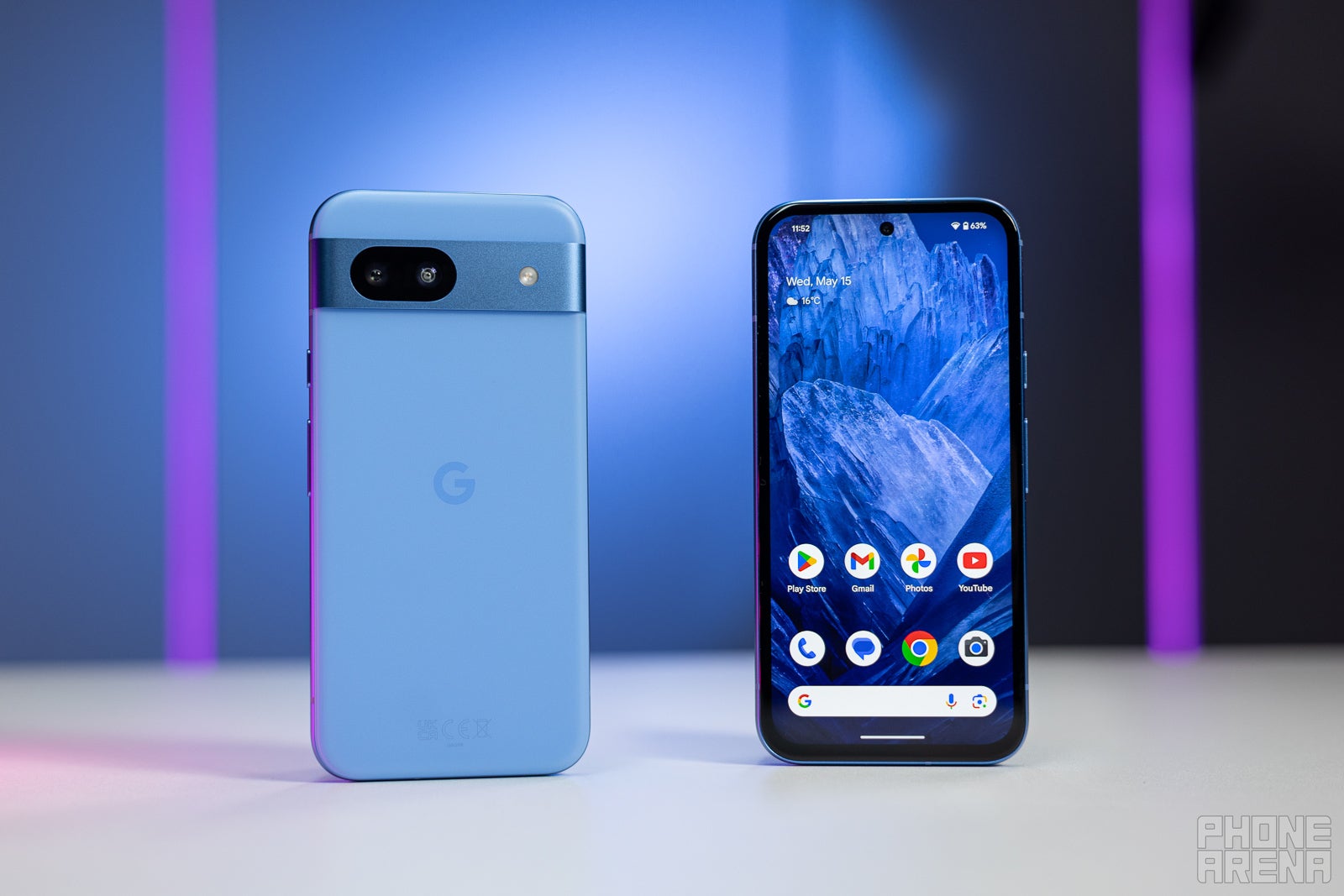
The Bay color variant of the Pixel 8a reminds me of a summer blue sky—not a single cloud in sight
Overall, the phone feels great in the hand, with the small exception that you can feel the part where the frame meets the back glass. Speaking of the back glass, it has a nice, matte finish with a papery feel when you run your fingers over it. It also fends off fingerprints really well.
As far as design goes, the Pixel 8a follows the Camera Bar route. The bar itself is aluminum, just like the frame, and it houses the pill-shaped dual camera system plus the LED flash. There’s a discreet G on the back, and just two buttons on the right side of the frame: a power button and the volume rocker.
As far as colors are concerned, the phone is available in Bay (light blue), Aloe (light green), Obsidian (black), and Porcelain (beige), and they all look very hip, especially the green version that will further make the Pixel 8a pop out in the crowd.
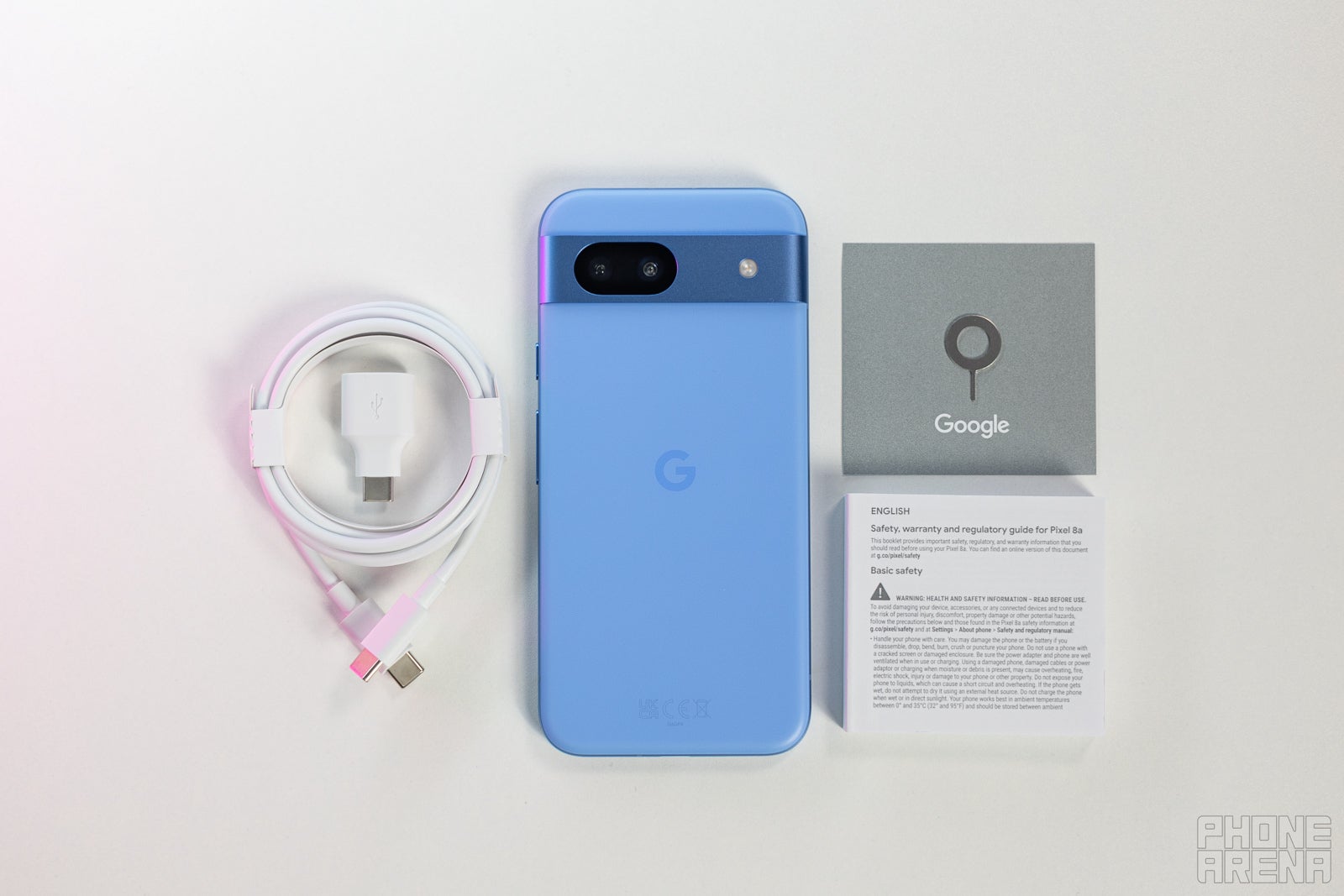

The retail box is a standard affair, at least there’s a cable
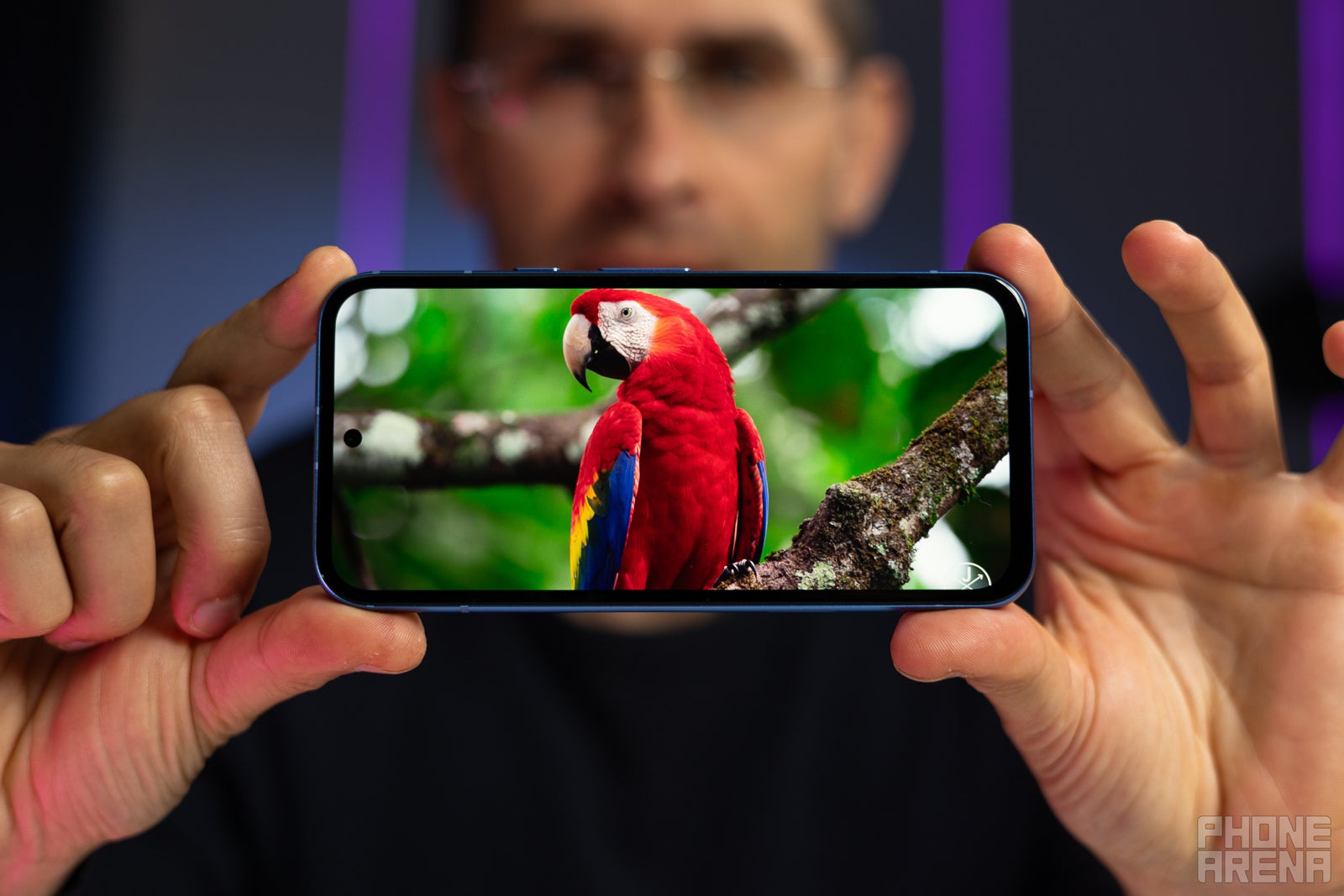

The bezel around the screen is almost as big as the front camera cutout
The display is a 120Hz panel and can switch automatically between 60Hz and 120Hz. One thing worth mentioning is that you can’t force 120Hz on the Pixel 8a all the time. There’s a Smooth Display option that, when toggled, lets the phone choose when to bump up the screen refresh rate to 120Hz, and when to keep it at 60Hz.
When it comes to display tests, the Pixel 8a comes on top of all its direct competitors, including the regular Pixel 8. The screen is very bright; we measured almost 1,500 nits; the color accuracy is great; and the minimum brightness is also excellent. Overall, with the Pixel 8a, you’re getting a flagship-grade screen in a midrange-priced phone. Minus the huge bezels, of course.
Let’s add a few words on biometrics here. The under-display fingerprint scanner is actually pretty fast and accurate. Google had some gremlins under the hood of some Pixel phones in the past, but they’ve been taken care of. The facial recognition also works pretty fast and consistently.
Google Pixel 8a Camera
It’s all in the algorithms
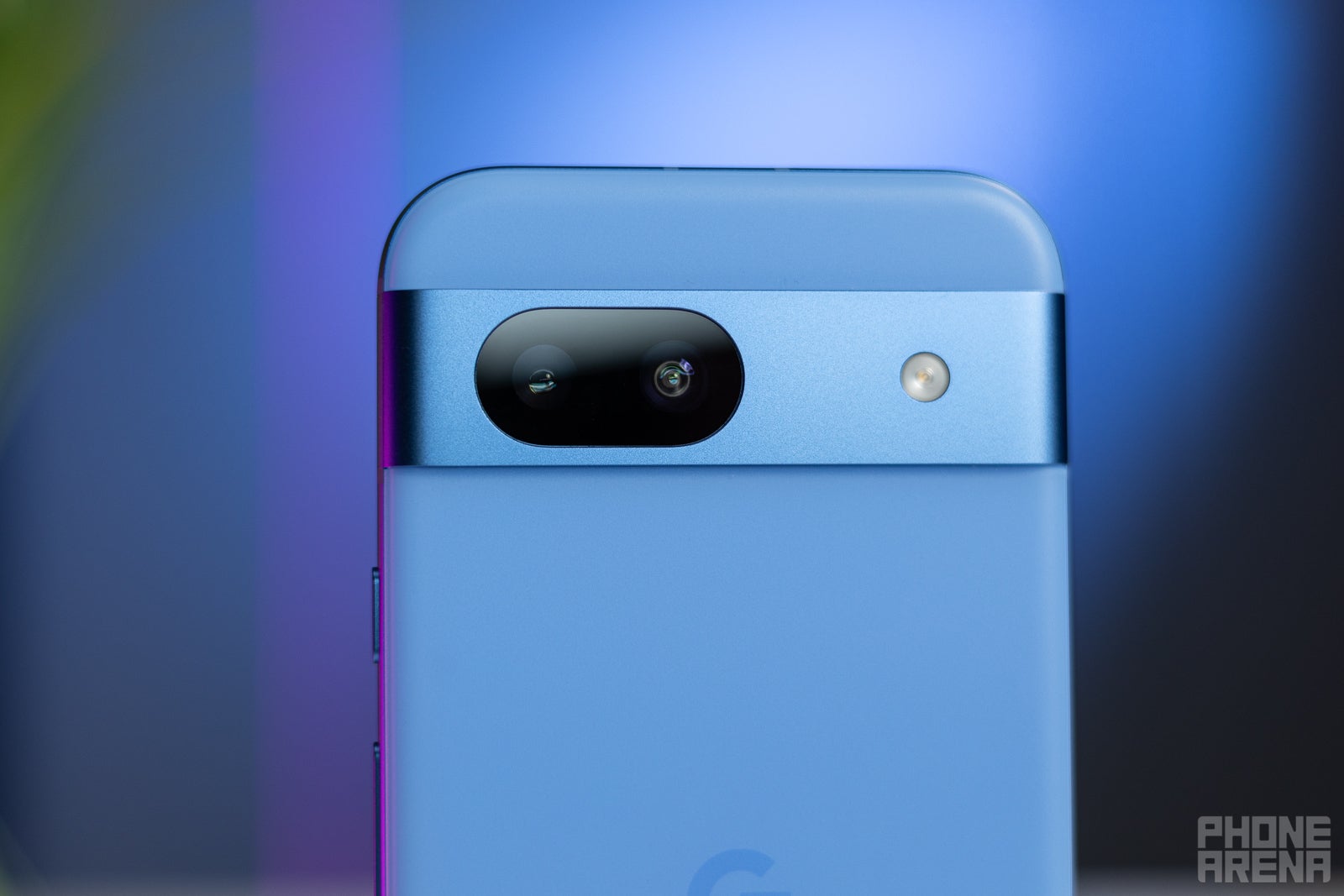

The hardware is the same as last year, but the algorithms are different!
The Pixel 8a features the same camera system as its predecessor, namely a 64 MP main camera with OIS and f/1.89 aperture, coupled with a 13 MP ultrawide. This might disappoint some people, but don’t forget how strong and advanced Google is when it comes to image processing algorithms.
The selfie camera has also been carried over from the last model—it’s a 13 MP, f/2.2, 20mm equivalent ultrawide snapper. On the software side of things, some of the features that are now available on the Pixel 8a are: Top Shot, Magic Editor, and Audio Magic Eraser, along with other tried and tested tools such as Magic Eraser, Night Sight, and Photo Unblur. The Pixel 8a doesn’t feature a telephoto camera, but again, thanks to the clever software, we have Super Res zoom with up to 8x magnification.
Video Quality

Compared to the Pixel 7a, the new model definitely does a better job on the video front. The image is more detailed with better colors, and the exposure is much better on the Pixel 8a. Image stabilization is also much better on the Pixel 8a, especially at high magnification.
Our composite camera score takes into account various key aspects of the Pixel 8a camera’s performance, such as exposure, focus, color reproduction, zoom quality, etc. Looking at the score above, it’s clear to see that the Pixel 8a has a pretty decent main camera and ultrawide camera, but it’s let down by the lack of a dedicated zoom lens.
Google Pixel 8a Performance & Benchmarks
Third generation Tensor
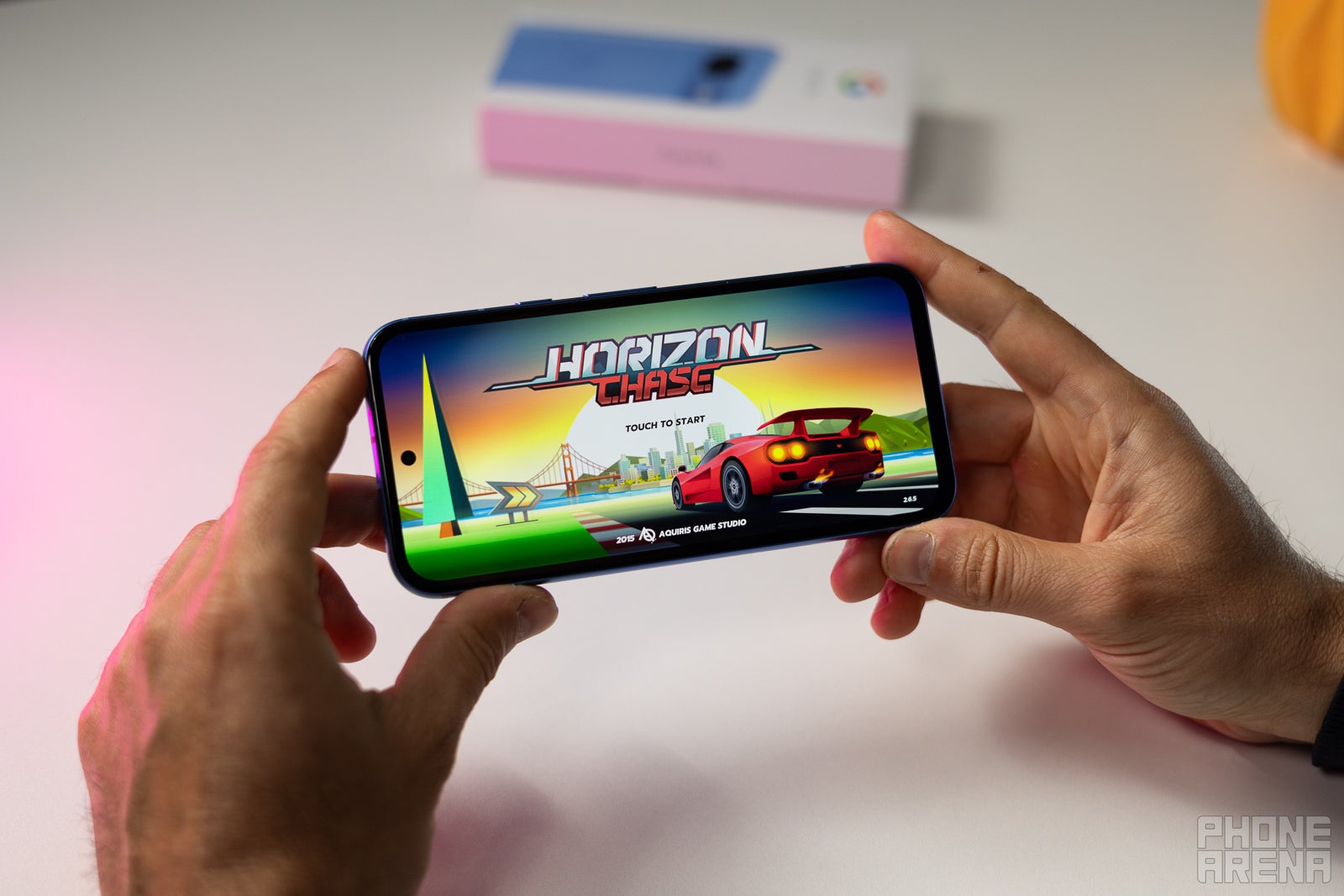

Pixel 8-like performance for much less money
There’s a slight hesitation when you cold-open an app, but then again, I’ve observed the same behavior on the Pixel 8. Overall, the Tensor G3 is still a bit off compared to Qualcomm’s and Apple’s top silicon, but in normal day-to-day use, you probably won’t feel much of a difference.
Performance Benchmarks:
The synthetic benchmarks corroborate the above. As a flagship chipset, the Tensor G3 is a bit underwhelming. But when put into a midrange phone, this silicon starts to shine against its competitors. The Pixel 8a manages some of the best scores in this price bracket and, unsurprisingly, mirrors the performance scores of its more expensive sibling.
Google Pixel 8a Software
Gemini-infused Google Assistant
When you long-press the power button, the Pixel 8a wakes up Gemini. You can type, use your voice to talk to the Large Language Model, or upload a picture and show it to the AI. What’s interesting is that Gemini also wakes up when you say “Hey, Google” or “Ok, Google,” and if it can’t accomplish the task given, it automatically hands it over to Google Assistant.
For all intents and purposes, these two look and feel like the same thing. If you ask the phone to set an alarm or call someone, it will use Google Assistant to do so. But if you just ask a question, the phone will use Gemini.
Gemini can’t control apps directly (yet), and it can’t transcribe and translate in real time; you need to use Google Translate for that. As of now, Gemini is not fully integrated with Google’s own ecosystem of apps, but it’s definitely coming in a Feature Drop or two. I can see Gemini doing things like composing and sending emails, texting people, transcribing meetings, controlling your smart home appliances, and so on.
The Pixel 8a comes with seven years of major OS updates, Feature drops, and security patches, so the phone will be supported until 2031. Which is crazy if you think about it, especially if you compare it to flagship phones that cost three times as much, and offer just three of four years of software support.
Google Pixel 8a Battery
A full-day phone
The Pixel 8a features a 4,492 mAh battery, a clear upgrade compared to its predecessor. Funnily enough, in our battery tests, the Pixel 7a managed better results in web browsing and video streaming, while the Pixel 8a won the gaming battle (beating the Pixel 8 as well).
I can’t put my finger on it, but it’s probably the screen, coupled with the Tensor G3, responsible for the battery performance. It’s not that bad; the overall performance is close to the competition in this price range, and in day-to-day real-life use, the phone manages a full day with no problems.
PhoneArena Battery Test Results:
Charging is where things get problematic. The Pixel 8a comes with the same 18W wired charging (I can’t use the word “fast” next to this kind of wattage) as its predecessor, and in 2024 it feels rather slow. I kinda hoped for Pixel 8 charging speeds, at least, but no cigar. The phone takes almost two hours to charge from 0 to 100%.
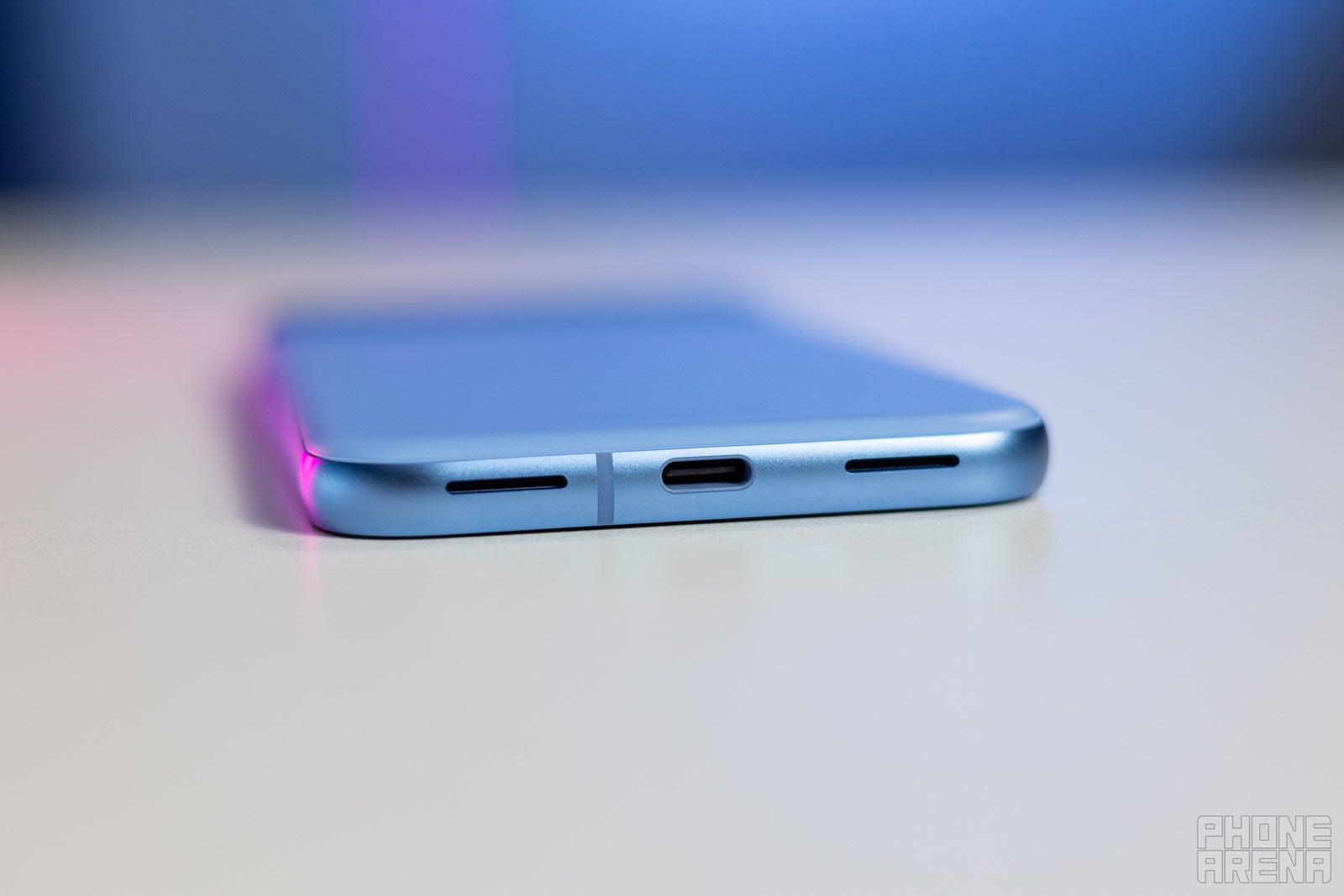

The USB-C port on the Pixel 8a; untapped potential…
PhoneArena Charging Test Results:
Google Pixel 8a Audio Quality and Haptics
There’s the usual stereo speaker setup found on the Pixel 8a, where the earpiece doubles as a second speaker, while there’s a bigger bottom-firing loudspeaker doing the heavy lifting. I found the Pixel 8a to be pretty loud, but at max volume it can be harsh-sounding with some pretty noticeable distortion in the high frequency range.
Should you buy it?
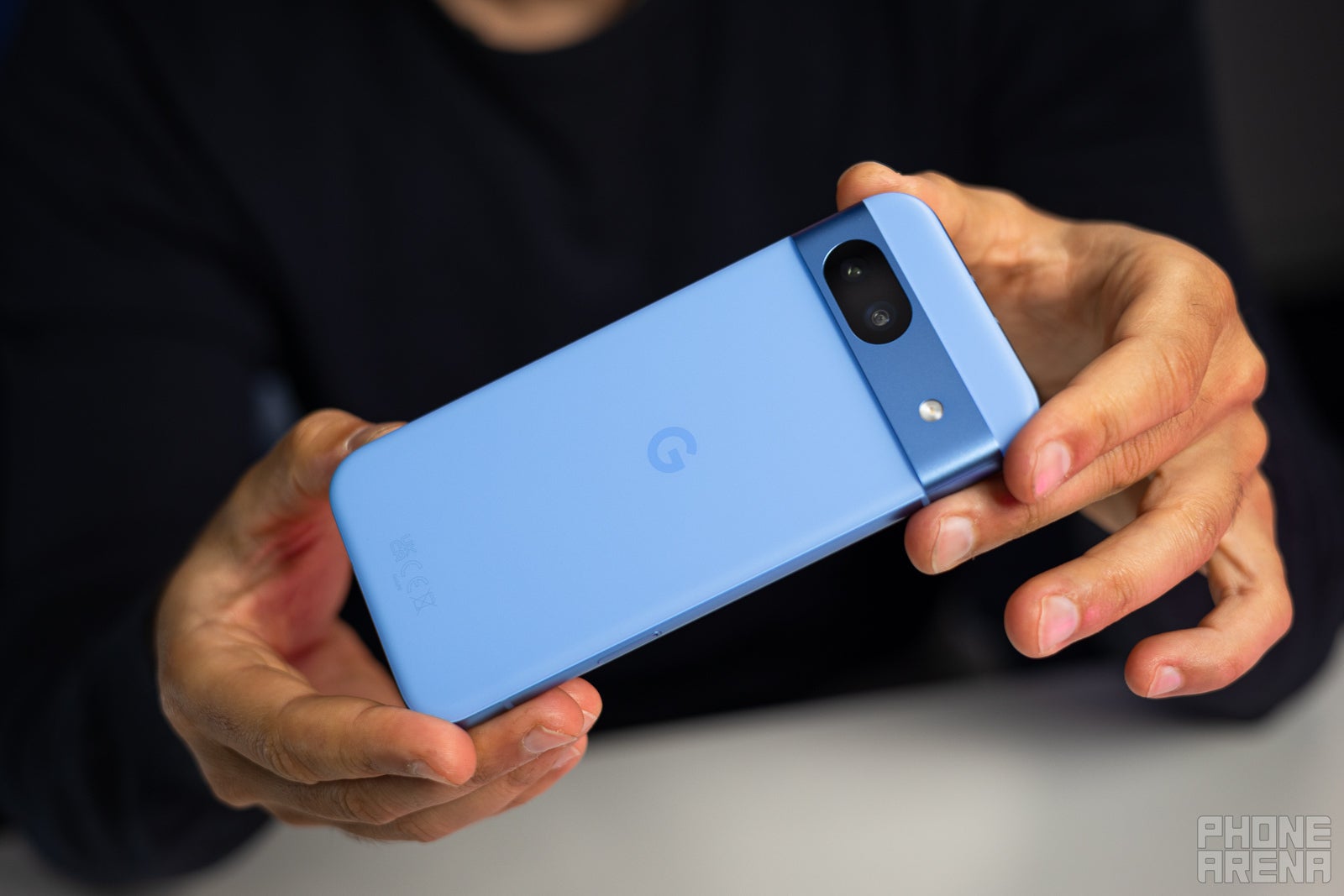

We present you the Pixel 8 killer!
Now, taken out of this specific context, the Pixel 8a is a great midrange phone and a great bang for your buck. If you’re looking for software longevity coupled with some great flagship-grade specs, it’s a no-brainer. At $499, you can’t go wrong with it, and as we all know, Pixel phones get better with each Feature drop. And there are plenty of those to come.
On the other side of the “pros-cons” spectrum, there are some things that you should know, accept, and prepare to live with if you do buy this phone. You’re going to look at those bezels all day, every day, so if it bothers you, walk away. They won’t disappear with time. The charging is painfully slow, so better adjust your habits to charge overnight.
That being said, the Pixel 8a offers a robust and future-proof software experience with many AI tricks yet to come, a great screen, and a quite decent main camera. And all that at a very competitive price.
👇Follow more 👇
👉 bdphone.com
👉 ultraactivation.com
👉 trainingreferral.com
👉 shaplafood.com
👉 bangladeshi.help
👉 www.forexdhaka.com
👉 uncommunication.com
👉 ultra-sim.com
👉 forexdhaka.com
👉 ultrafxfund.com
👉 ultractivation.com
👉 bdphoneonline.com